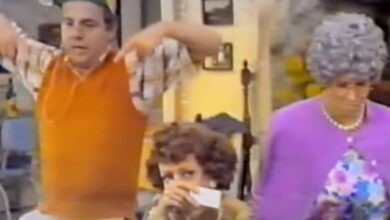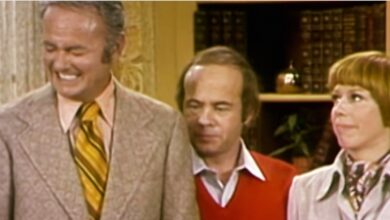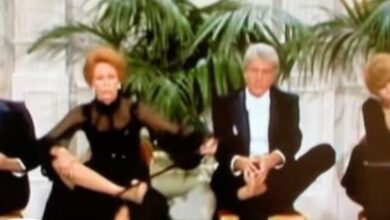The Osborne Brothers’ “Rocky Top” Becomes a Country Anthem That Bridged Generations and Redefined Bluegrass in 1967
When The Osborne Brothers released “Rocky Top” in December 1967, few could have predicted that this quick, two-minute bluegrass tune would become one of the most enduring songs in American music history. What began as a B-side track soon transformed into a generational anthem, crossing genre boundaries and embedding itself in the cultural fabric of the American South. Though it never topped the Billboard country charts—it peaked at No. 33—it struck a deeper, more lasting chord with listeners, achieving something more powerful than a No. 1 spot: permanence.
The Osborne Brothers, Sonny and Bobby, hailed from Hyden, Kentucky—a rugged Appalachian region steeped in tradition and music. They were not just products of the bluegrass movement; they were innovators within it. By the early 1960s, the brothers had already gained respect for pushing the genre’s sonic boundaries. Where Bill Monroe had defined bluegrass with purism, the Osbornes dared to incorporate drums, electric instruments, and harmony arrangements that pulled from rock and mainstream country, raising eyebrows among traditionalists but capturing new audiences in the process.
“Rocky Top” wasn’t originally their composition. It was penned by the prolific songwriting couple Felice and Boudleaux Bryant, best known for hits like “Bye Bye Love” and “Wake Up Little Susie.” The Bryants were holed up in a Gatlinburg, Tennessee hotel room, feeling claustrophobic amid the modern world’s noise. They began dreaming of a place untouched by time and worry—thus, “Rocky Top” was born. The lyrics, whimsical and defiant, painted a nostalgic picture of mountain life, away from “smoggy smoke” and burdensome modernity. When the Osbornes heard the song, they knew instantly it had the raw spirit that matched their own musical mission.
The recording session, held in Nashville, was swift and confident. Sonny’s banjo blazed through the track with a speed and precision that left engineers shaking their heads. Bobby’s high, keening lead vocal—stacked with harmonies—gave the song an urgency that stood apart from standard bluegrass fare. Producer Tommy Hill allowed the brothers to amplify the instrumentation slightly, a controversial move for a genre rooted in acoustic purity, but one that helped bridge the gap between traditional bluegrass and a more modern country audience.
Despite modest radio rotation at first, “Rocky Top” caught fire organically. It stayed on the charts for a respectable ten weeks but quickly became a live staple, not just for the Osbornes but for countless other performers in barrooms, county fairs, and festival stages. In 1970, just three years after its release, the state of Tennessee adopted “Rocky Top” as one of its official state songs—a testament to how deeply it resonated with the regional identity.
The song’s cultural impact was seismic. For one, it helped to modernize bluegrass at a time when the genre risked fading into niche obscurity. It also blurred the lines between bluegrass and mainstream country in a way few songs had done before. College marching bands adopted it, especially the University of Tennessee, where it became synonymous with football and Southern pride. To this day, the song is blasted in Neyland Stadium whenever the Volunteers take the field, drawing thousands into a raucous, near-religious sing-along.
For the Osborne Brothers, “Rocky Top” opened doors far beyond the bluegrass circuit. It elevated them to the Grand Ole Opry in 1964—just a few years prior—but the song’s success solidified their place in the institution’s long history. Their tours expanded across the country, and even internationally, as bluegrass gained newfound appreciation among folk audiences and curious rock fans during the late ’60s and early ’70s. They weren’t just carrying on tradition; they were transforming it.
The song’s influence rippled through the genre, inspiring a wave of young musicians to view bluegrass as something adaptable, not stuck in the past. Artists like Ricky Skaggs, Vince Gill, and Alison Krauss would later credit trailblazers like the Osbornes for showing that you could honor tradition without being trapped by it. “Rocky Top” became a gateway—a first taste of bluegrass for listeners who might never have touched the genre otherwise.
Covers of the song exploded in the decades that followed. Lynn Anderson’s 1970 rendition brought it to new audiences and peaked at No. 17 on the country charts. In later years, Dolly Parton, The Grascals, and even jam bands like Phish offered their own interpretations. Each version carried the song’s spirit but reflected its adaptability—“Rocky Top” could live in multiple worlds, from traditional mountain picking to high-energy stadium rock sets.
The song also arrived at a pivotal time for the brothers personally. Bobby had recently returned to performing after a brief health-related hiatus, and the success of “Rocky Top” re-energized both siblings. It allowed them to reintroduce themselves to the music world not as relics of a fading genre, but as its rejuvenators. The track’s success was a reward for their commitment to innovation—even if it ruffled some feathers in the process.
Even today, “Rocky Top” remains a staple in country and bluegrass radio, as well as a rite of passage for any artist stepping into the Americana scene. It’s listed in the Grammy Hall of Fame and was named by the Western Writers of America as one of the Top 100 Western songs of all time. It’s a go-to encore, a guaranteed crowd-pleaser, and a reminder of the musical crossroads where joy, defiance, and tradition meet.
But more than accolades, its legacy lies in how it shifted the trajectory of bluegrass. It proved that the genre could evolve, that it could be loud, proud, and playful without losing its soul. It opened the door for experimentation, setting the tone for future cross-genre collaborations and progressive acoustic sounds that still resonate today.
Although both Sonny and Bobby Osborne have passed on—Sonny in 2021 and Bobby in 2023—their work lives loudly through “Rocky Top.” The track is often played in tributes, anniversaries, and documentary retrospectives that chart the journey of country music through the ages. It’s as close to immortal as a two-minute bluegrass song can get.
In the end, “Rocky Top” is more than just a song—it’s a cultural landmark. It captured a longing for simplicity, transformed an entire genre, and made household names of two brothers from Kentucky. In doing so, it solidified The Osborne Brothers’ place in the pantheon of country music pioneers and ensured their music would echo through the hills for generations to come.





